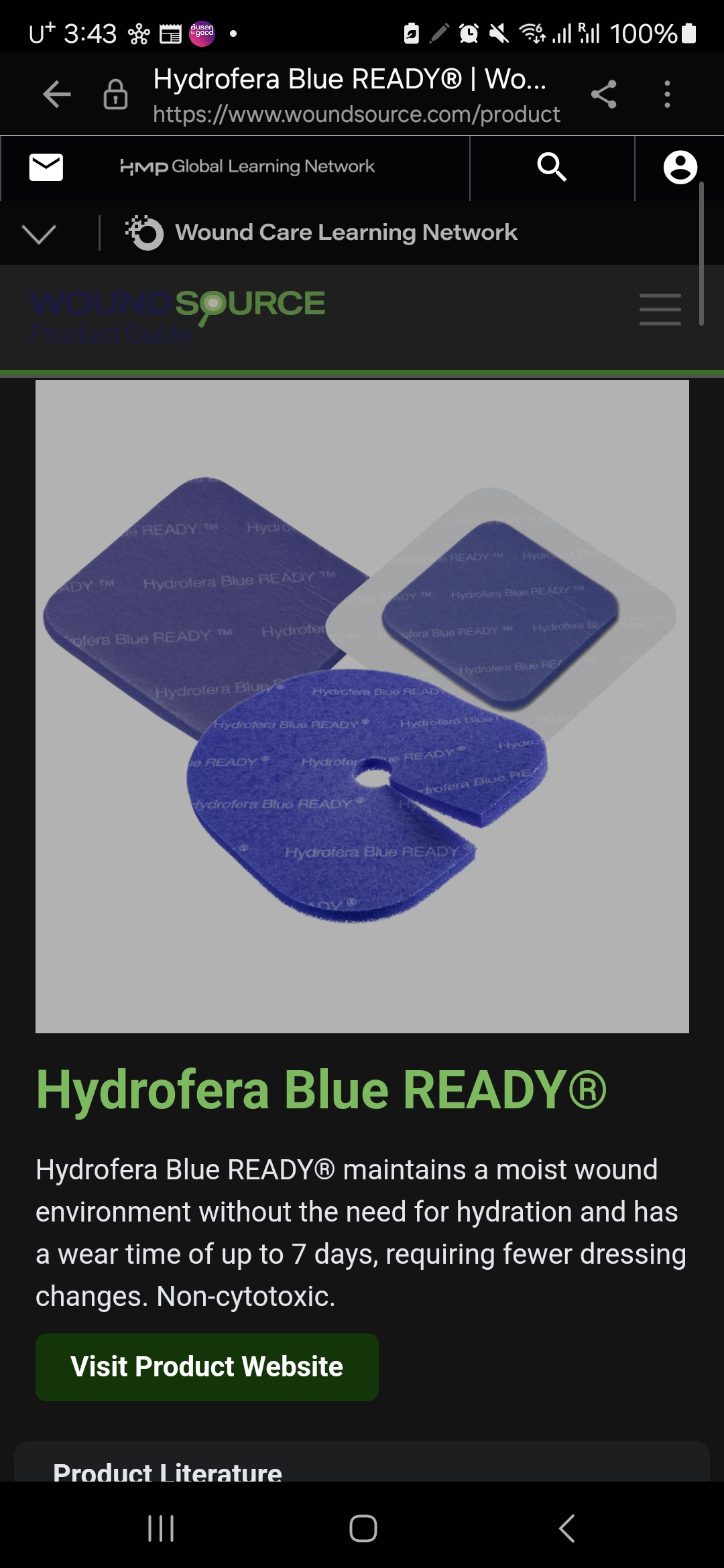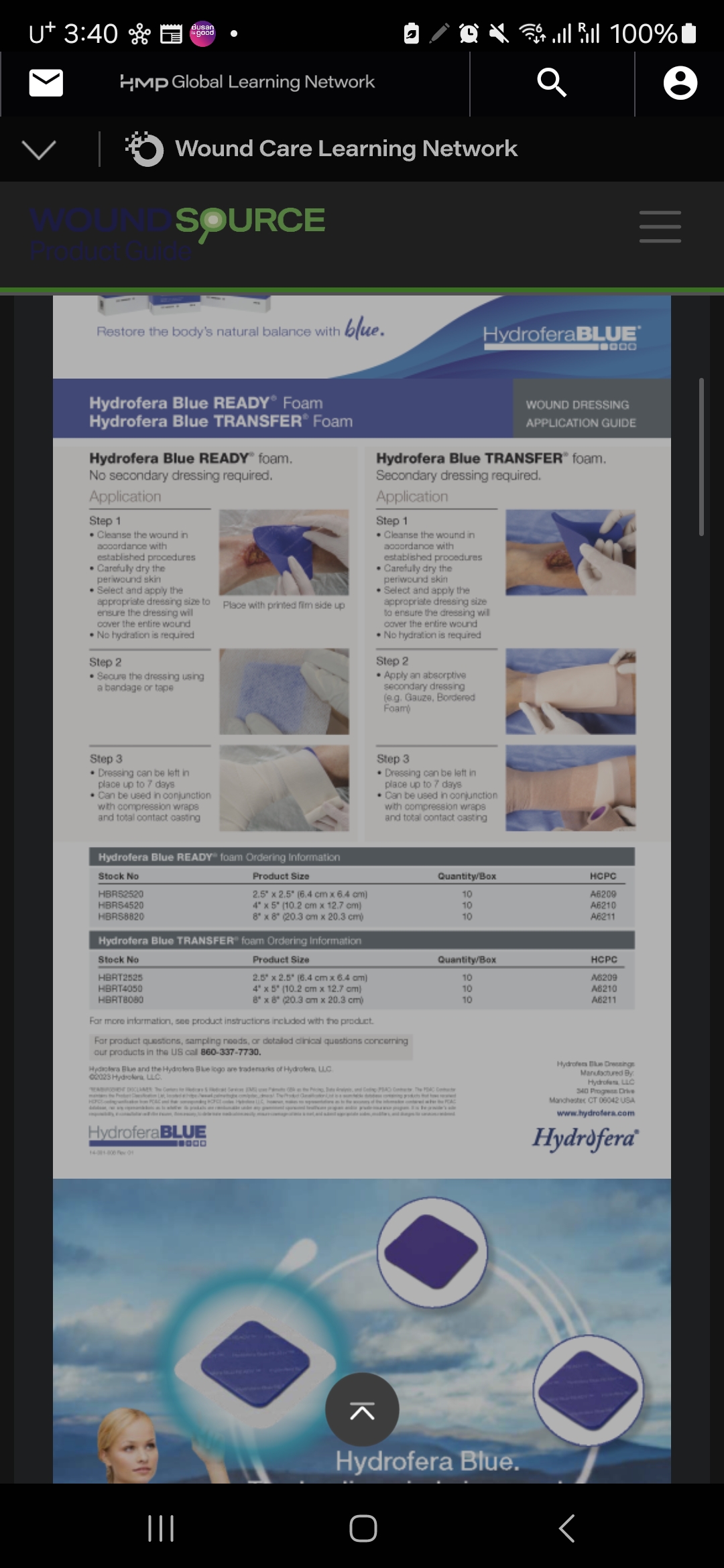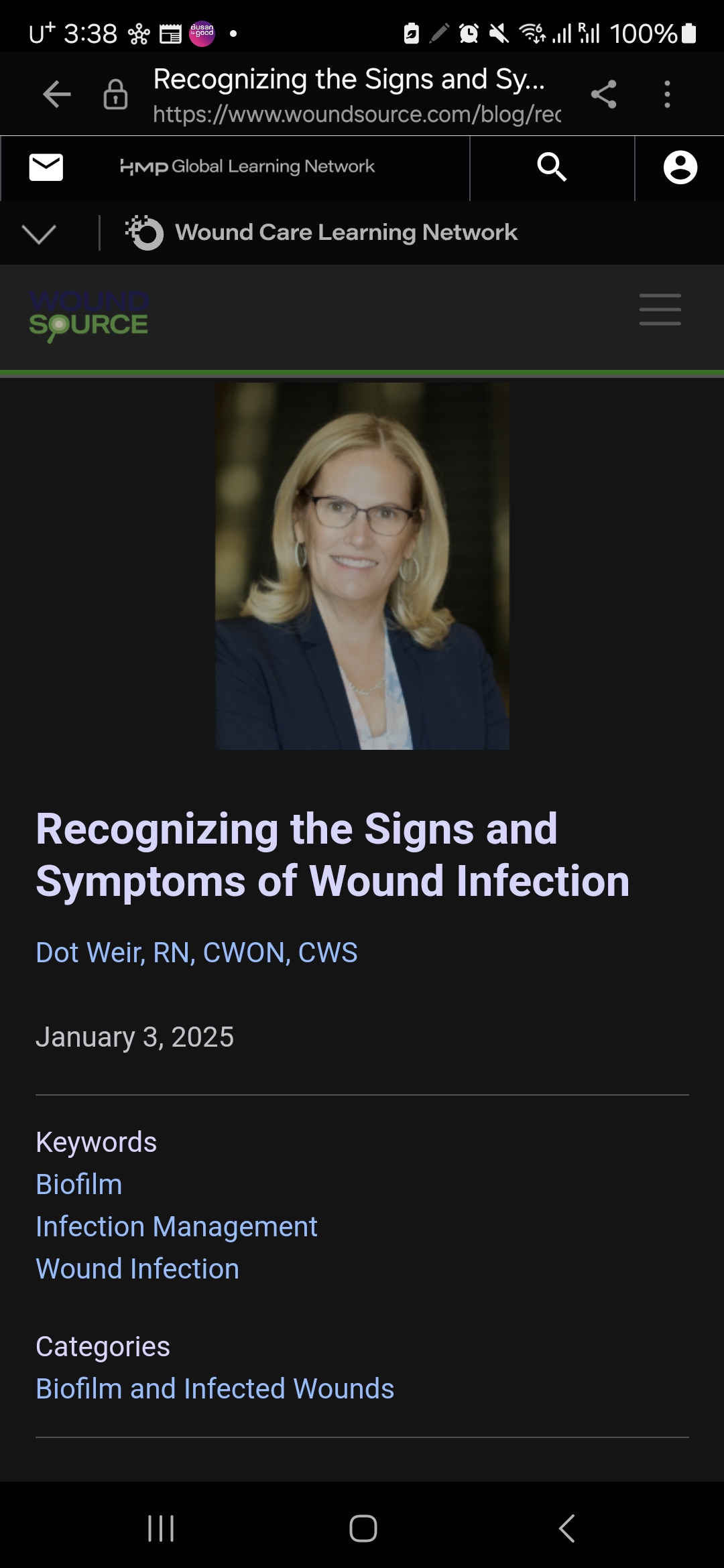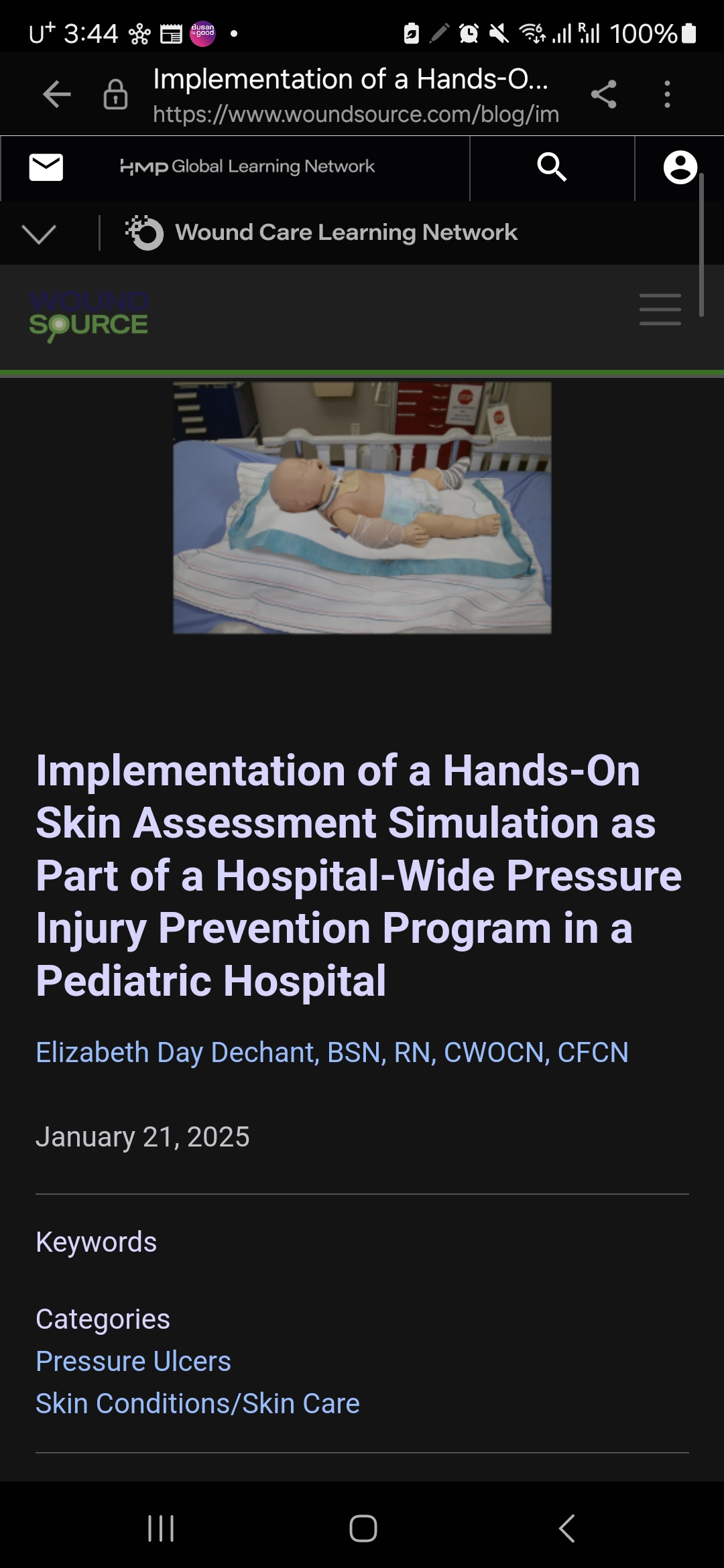[Review] hydrofera blue/biofilm/PI_skin care


Benefits
• Broad-spectrum antibacterial protection
• No hydration required prior to application
• Up to seven day wear time
Indications
Hydrofera Blue READY® is intended as an external dressing for use in local management of wounds such as pressure injuries, donor sites, venous stasis ulcers, arterial ulcers, diabetic ulcers, abrasions, lacerations, superficial burns, post-surgical incisions, and other external wounds inflicted by trauma.
Contraindications
The dressings are not indicated for third-degree burns.
The dressings should not be used on individuals who are sensitive to or who have had an allergic reaction to the dressing or one of its components.
Warnings and Precautions
This material is not an implant.
Do not reuse dressing.

Recognizing Wound Infection Signs and Symptoms
• Early recognition of wound infection is crucial to prevent systemic complications like sepsis.
• Cardinal signs of infection include redness, swelling, warmth, changes in drainage (e.g., pus), increased odor, and new or worsening pain.
• Clinical observation is the primary diagnostic tool, with wound assessment focusing on these signs; cultures are used for confirmation and guiding antibiotic choice.
• Topical antimicrobials can reduce bacterial load before resorting to systemic antibiotics, and proper wound cleansing, including the periwound area, is vital.
• Immunocompromised patients may exhibit subtle signs, such as stalled healing, highlighting the need for vigilant monitoring.

Pediatric Hospital's Hands-On Skin Assessment Simulation
• A pediatric hospital implemented a hands-on skin assessment simulation as part of a hospital-wide pressure injury prevention program.
• The simulation used infant and teenage mannequins with various pressure injury risk factors to train nurses and clinical assistants.
• Over 800 nurses participated, showing increased knowledge and comfort with skin assessment after the simulation.
• Following the program's implementation, including the simulation, hospital-acquired serious harm pressure injuries decreased by 69%.
• While the decrease in pressure injuries can't be solely attributed to the simulation, it was deemed a valuable component of the comprehensive program.